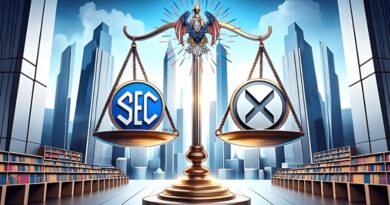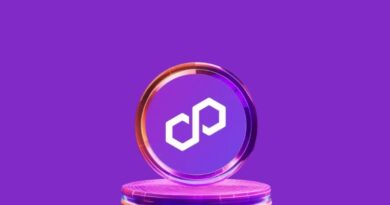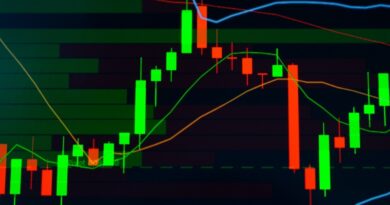Binance to Delist Altcoins on May 2 – Price Impact Explained
Binance Set to Delist 4 Altcoins on May 2: What You Need to Know
If you’re holding certain altcoins in your Binance account, it may be time for a portfolio check.
Crypto exchange giant Binance just announced it will remove four cryptocurrencies from its platform on May 2. That means users won’t be able to trade, deposit, or withdraw those tokens on Binance after that date.
So, what does that mean for your investments? And how are these coins responding to the news? Let’s break it all down in plain language.
Which Altcoins Are Being Delisted?
According to Binance, the following tokens will be removed:
- Aeron (ARN/BEP2)
- Bitcoin Standard Hashrate Token (BTCST)
- Dock (DOCK)
- Mithril (MITH)
Binance regularly reviews the coins listed on its platform. If a project no longer meets certain performance or quality standards, it may get delisted.
Some examples of what Binance looks at:
- Activity of developers
- Trading volume and liquidity
- Project’s transparency
- Community support
- Security and code stability
If a project appears inactive or shows signs of being abandoned, that’s usually a red flag for exchanges.
How Are These Tokens Reacting?
The announcement triggered a sharp drop in prices, especially for the smaller-market coins. Let’s take a look at how each is doing.
Aeron (ARN)
Aeron saw one of the biggest drops. At the time of the announcement, its price fell by over 36%.
If you’re not familiar with Aeron, it’s a project aimed at improving aviation safety using blockchain. It had its moment during the 2017-2018 ICO boom, but has remained inactive for some time now.
Today, there’s no visible roadmap, the website is no longer active, and no recent updates from the team. That silence signals that the project may have been abandoned.
Bitcoin Standard Hashrate Token (BTCST)
BTCST dropped around 31% after the delisting news. This token was tied to Bitcoin mining power. The idea was to let investors buy and sell mining hash rate without actually owning the hardware.
Interesting concept, but it never caught on in a big way — especially after China’s crackdown on mining in 2021. Since then, BTCST has struggled with usage.
Dock (DOCK)
DOCK’s price slipped over 16% after the announcement. Dock tried to solve the issue of digital credentials on the blockchain — like your degree or work ID being verified using decentralized solutions.
While the use case seemed practical, the execution didn’t generate strong engagement. The project hasn’t had many updates recently either, which probably raised Binance’s concerns.
Mithril (MITH)
MITH saw a 15% dip following the news.
It was once positioned as a decentralized social media platform that rewards content creators with crypto. But it couldn’t stand out in a crowded field. With few recent developments, the community around Mithril also faded.
What Happens After May 2?
Here’s what you need to do if you’re holding any of these delisted coins in your Binance account:
- Trading will be halted: All trading pairs involving these tokens will be removed by 03:00 UTC on May 2.
- Deposits will stop: You won’t be able to deposit the tokens after that time.
- Withdrawals still possible (for a while): You can withdraw your tokens until August 2, 2024. After that, Binance may remove the wallet support entirely.
So if you still have any of these tokens on Binance, make sure to:
- Swap them into another crypto if possible
- Withdraw them to an external wallet
- Check announcements for final deadline reminders
Staying on top of delistings helps you avoid getting stuck with untradeable tokens.
Why Do Exchanges Delist Coins?
Think of a crypto exchange like a supermarket. If a product isn’t selling, is low quality, or gets bad reviews, the store might stop stocking it.
It’s the same with Binance and other exchanges. They want to make sure the tokens they list are useful, active, and safe for users.
Some signs a coin might get delisted:
- Low trading volume
- No development activity
- Lack of transparency from project team
- Technical risks, like bugs or hacks
For example, if a coin hasn’t posted a code update in months or doesn’t respond to questions, that’s a concern.
How Can You Protect Yourself?
Nobody likes losing money on assets that suddenly vanish from platforms. So here are a few simple tips:
Do Your Research
Before investing in any altcoin, check:
- Is the project still active?
- Does the team provide updates?
- Can you find users actually using the platform?
If the answers to these are unclear or negative, think carefully before buying in.
Use Multiple Wallets
Don’t store all your coins on one exchange. If Binance removes support, you’ll still have access through your personal wallet.
Consider using:
- Hardware wallets like Ledger or Trezor
- Software wallets like Trust Wallet or MetaMask
That way, you stay in control — even if an exchange delists your token.
Stay Updated
Follow exchange announcements. Binance usually gives weeks of notice before delisting a coin. Set up alerts or check Binance’s blog a few times a month.
That small habit can save you from last-minute panic.
Final Thoughts
The crypto space moves quickly. A project that was hot last year might not last through this one. Binance delisting four tokens is just one more reminder.
If you’re investing in altcoins, treat them as high-risk. Some might grow — but many fade.
Always keep learning, diversify your holdings, and don’t forget to keep one eye on token performance and development activity.
And most importantly — check your wallet before May 2.
Would you hold on to a delisted coin or cut your losses early? Let us know your thoughts in the comments.









